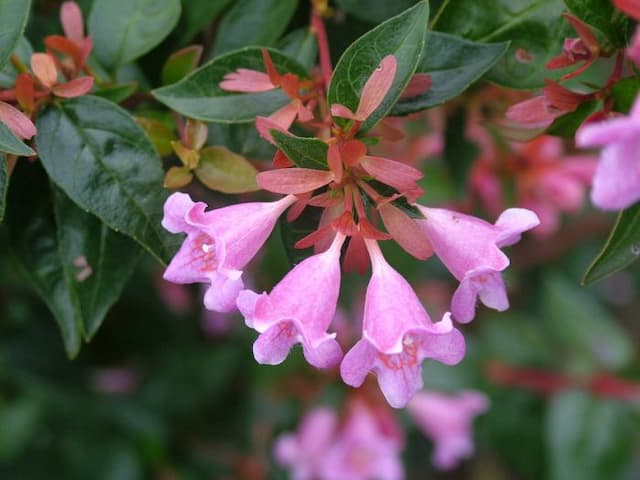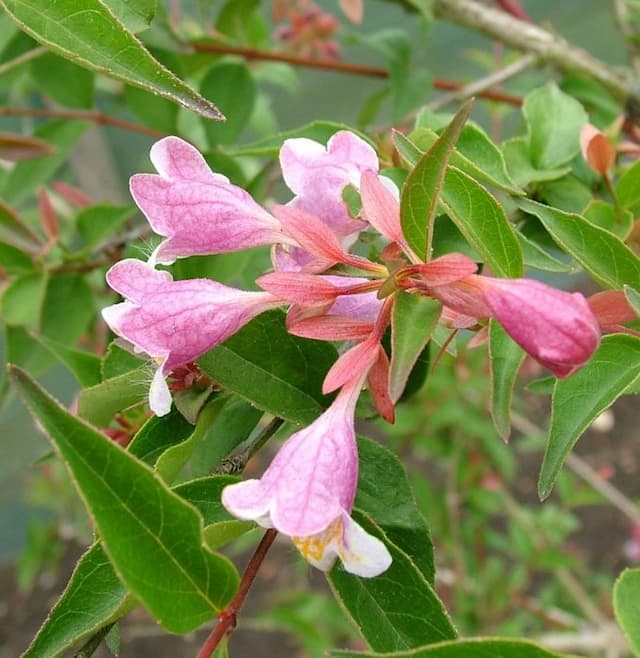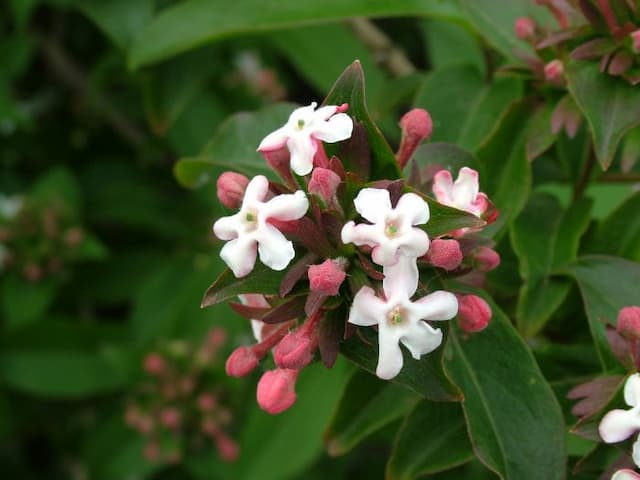Pterocephalus perennis does not have a widely recognized common name; it is primarily known by its botanical name. Pterocephalus perennis

ABOUT
Pterocephalus perennis, commonly known as the perennial scabious, is a flowering plant that typically maintains visual interest throughout multiple seasons. The plant has a bushy growth habit that often gives it a rounded and dense appearance. The foliage of the perennial scabious consists of lance-shaped leaves that are medium green, with a slightly textured surface that can add a fine element to its visual appeal. The leaves may grow in a rosette form at the base with some branching out along the stems. The stems themselves are generally upright and can appear to be somewhat wiry, which supports the flowering heads well above the foliage. As for the flowers, they are a notable feature, presenting as small yet profuse pincushion-like heads. They have numerous, tiny flowers tightly packed together in a dome-shaped configuration, giving them a whimsical, fluffy look. These blossoms can come in shades of pink, mauve, lavender, or sometimes white, which often attract butterflies and other pollinators. Blooming typically occurs in late spring to summer, providing a long-lasting display of color in the garden. When the flowers finish blooming, they may be followed by a seed head that also has an attractive texture and can persist into the colder months, adding winter interest to outdoor spaces. The seeds are small, but the seed heads' structure makes them noticeable in the plant's silhouette against snow or winter skies. Overall, the perennial scabious has an aesthetic that blends well with various garden designs, providing texture, color, and movement with its breezy flowers and seed heads. Its foliage and floral display make it a charming addition to borders, beds, and cottage-style gardens.
About this plant
 Names
NamesFamily
Caprifoliaceae
Synonyms
Perennial Scabious
Common names
Pterocephalus perennis
 Toxicity
ToxicityTo humans
I could not find specific information regarding the toxicity of Pterocephalus perennis to humans. Therefore, I cannot provide any details on the symptoms of poisoning or the consequences of ingesting any part of the plant. It's important to treat any unknown plant with caution and avoid consumption unless it is confirmed to be safe.
To pets
Similarly, there is no detailed information available on the toxicity of Pterocephalus perennis to pets. Without this information, it is not possible to describe the symptoms of poisoning or the consequences of ingestion by animals. As with humans, it's best to keep pets away from plants whose toxicity profile is not known.
 Characteristics
CharacteristicsLife cycle
Perennials
Foliage type
Deciduous
Color of leaves
Green
Flower color
Pink
Height
2 feet (0.61 meters)
Spread
2 feet (0.61 meters)
Plant type
Shrub
Hardiness zones
5
Native area
Mediterranean
Benefits
 General Benefits
General Benefits- Attracts pollinators: Pterocephalus perennis, commonly known as scabious, draws in bees and butterflies, which help with pollination.
- Drought tolerance: Scabious has a good resistance to drought, making it suitable for xeriscaping and arid climate gardens.
- Low maintenance: It typically doesn't require a lot of care, making it an excellent choice for gardeners seeking low-maintenance plants.
- Aesthetic appeal: Scabious features attractive flowers and foliage, which can enhance the visual beauty of a garden.
- Extended blooming period: The flower has a long blooming season, providing color and interest throughout much of the year.
- Wildlife habitat: The plant can serve as a habitat and food source for various wildlife, contributing to a healthy ecosystem.
- Edging and borders: With its neat growth habit, scabious is ideal for creating edges and borders in garden design.
 Medical Properties
Medical Properties Air-purifying Qualities
Air-purifying QualitiesThis plant is not specifically known for air purifying qualities.
 Other Uses
Other Uses- Pterocephalus perennis, commonly known as scabious, can be used as a natural dye, providing a range of soft green to brown colors, depending on the mordant used.
- Scabious's dried seed heads can add texture and interest to dried floral arrangements, complementing other elements with their unique shape.
- The plant has been used in traditional pillow stuffing for a rustic, earthy touch, potentially enhancing the aesthetic of artisan-made home goods.
- Scabious flowers are appealing to photographers and artists for their whimsical, frilly blooms that add a wildflower vibe to their compositions.
- The nectar and pollen-rich flowers are beneficial for creating habitat gardens aimed at supporting local bee populations.
- Scabious plants can be used as a natural indicator of soil quality, as they tend to thrive in well-drained, somewhat calcareous soil.
- The stems and foliage can be included in compost as a green layer, contributing nitrogen and other nutrients as they decompose.
- Used in permaculture landscapes, scabious helps to support a diversity of beneficial insects, contributing to the garden's overall health.
- Crafters may use the textured leaves and stems in paper making to add organic details to handmade paper.
- Scabious can be grown as part of a living mulch system, suppressing weeds and gradually improving soil structure as the plants die back.
Interesting Facts
 Feng Shui
Feng ShuiThe plant Pterocephalus perennis, commonly known as the Pincushion Flower, is not used in Feng Shui practice.
 Zodiac Sign Compitability
Zodiac Sign CompitabilityThe Pterocephalus perennis, commonly known as the Pincushion Flower, is not used in astrology practice.
 Plant Symbolism
Plant Symbolism- Endurance: The name "perennis" suggests perennial nature, symbolizing the ability to endure and survive year after year.
- Resilience: As a plant that can grow in rocky and difficult conditions, it represents resilience and overcoming challenges.
- Adaptability: Its ability to adapt to various environments makes it a symbol for flexibility and versatility.
 Water
WaterThe Pincushion Flower should be watered deeply, allowing the soil to dry out slightly between waterings. In general, provide about 1 inch of water per week, either from rainfall or manual watering. During hot, dry spells, watering may need to be increased to twice a week. Reduce the amount to approximately half a gallon per watering during the winter months when the plant is dormant. Over-watering can lead to root rot, so it is essential to ensure good drainage in the soil.
 Light
LightPincushion Flowers thrive in full sun to partial shade. They should be placed in a spot where they receive at least 6 hours of sunlight daily. However, in extremely hot climates, some afternoon shade can help protect the plants from intense, direct sunlight.
 Temperature
TemperaturePincushion Flowers prefer a temperate climate with temperatures ranging from 60°F to 75°F for optimal growth. They can withstand minimum temperatures down to 20°F but should be protected from frost. Avoid exposure to temperatures above 85°F as it may cause stress to the plant.
 Pruning
PruningPincushion Flowers benefit from pruning to encourage bushier growth and more blooms. Trim back the plant by one-third in early spring before new growth starts. Deadhead spent flowers regularly to promote continuous blooming throughout the season. The best time for substantial pruning is after the last frost in spring.
 Cleaning
CleaningAs needed
 Soil
SoilScabious Pincushion prefers well-draining soil rich in organic matter with a slight preference for alkalinity. A mix of loam, peat, and sharp sand can be ideal, ensuring that it does not remain too wet to prevent root rot. The ideal pH for Scabious Pincushion ranges from neutral to slightly alkaline, about 7.0 to 7.5.
 Repotting
RepottingScabious Pincushion doesn't require frequent repotting and can thrive in the same pot for several years. It is generally best to repot every 2-3 years to refresh the soil and to accommodate any significant growth.
 Humidity & Misting
Humidity & MistingScabious Pincushion plants are fairly adaptable but prefer moderate humidity levels, typical of outdoor environments. If grown indoors, ensuring good air circulation can help maintain suitable humidity around the plant.
 Suitable locations
Suitable locationsIndoor
Place Scabious Pincushion near a sunny window and avoid overwatering.
Outdoor
Plant in full sun to partial shade and ensure soil is well-drained.
Hardiness zone
4-8 USDA
 Life cycle
Life cyclePterocephalus perennis, commonly known as scabious, starts its cycle with seed germination, typically in the spring when the soil warms. Seedlings establish a rosette of leaves at the surface and a root system below. As it grows, the scabious enters the vegetative stage, where it develops a stronger root system and more foliage. Following the vegetative phase, the plant enters the reproductive stage during the summer, producing tall flowering stems with pink to purple flowers that attract pollinators. Once pollinated, the flowers produce seeds that when mature, are dispersed by wind or wildlife. In the winter, the plant may die back to the ground, with the root system remaining dormant until the next spring.
 Propogation
PropogationPropogation time
Spring-Early Summer
Propogation: Pterocephalus perennis, commonly known as perennial scabious, is best propagated through seed sowing. To achieve successful germination, the best time to sow seeds is in late winter to early spring. In a seed tray filled with well-draining soil, scatter the seeds lightly on the surface. It’s often advised not to cover the seeds, as they need light to germinate, however, a very fine sprinkling of soil can be applied. The tray should then be placed in a warm area with temperatures ranging between 65 to 70 degrees Fahrenheit (18 to 21 degrees Celsius), ensuring that the soil remains moist but not waterlogged. Germination can take anywhere from two to three weeks, after which the seedlings can be potted on or planted out once they are large enough to handle and the risk of frost has passed.








![Himalayan honeysuckle [Golden Lanterns]](/_next/image?url=https%3A%2F%2Fplants-admin.emdemapps.com%2Fimages%2Fplants%2F%2Fimages%2F604b55302cc87.png&w=640&q=75)
